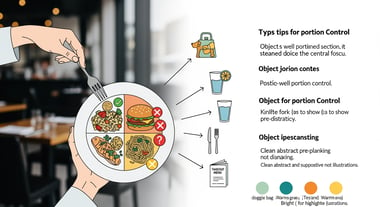As Master Kim, the Strategic Roadmaps Architect for BeSlim.me, I'm here to provide a direct, analytical breakdown of incorporating heart-healthy fats into a ketogenic (keto) diet. The keto diet emphasizes high-fat, low-carb intake to promote ketosis, where your body burns fat for fuel. However, not all fats are created equal—focusing on heart-healthy options can enhance cardiovascular benefits while mitigating risks. This guide analyzes the pros and cons, offers a structured 5-step implementation roadmap, and backs strategies with clinical evidence. Remember, while keto can be effective for weight loss and metabolic health, it's not suitable for everyone; consult a healthcare professional before starting, especially if you have heart conditions or lipid disorders.
Pros & Cons of Healthy Fats for Keto
To kick off, let's evaluate the method of prioritizing heart-healthy fats (like monounsaturated and polyunsaturated fats from sources such as avocados, nuts, and fatty fish) within a keto framework. This approach aims to balance the diet's high-fat nature with cardiovascular protection.
| Aspect | Pros | Cons |
|---|---|---|
| Health Benefits | Supports heart health by reducing inflammation and improving cholesterol profiles; evidence shows it may lower LDL cholesterol when replacing saturated fats. | High-fat intake can elevate cholesterol in some individuals, potentially increasing heart disease risk if not monitored. |
| Weight Management | Promotes satiety and ketosis for effective fat loss; studies link it to sustained weight reduction. | Initial weight loss may not be sustainable long-term without careful planning, leading to yo-yo dieting. |
| Ease of Implementation | Versatile food options make it adaptable to daily meals; enhances flavor without carb reliance. | Requires label-reading and education to avoid hidden carbs or unhealthy fats, which can be time-consuming. |
| Sustainability | Can be integrated into lifelong habits if balanced with variety. | Risk of nutrient deficiencies if over-relying on fats without diverse sources; may feel restrictive socially. |
| Evidence Base | Backed by research showing improved insulin sensitivity and reduced triglycerides. | Not ideal for all; contraindicated for those with gallbladder issues or certain genetic lipid disorders. |
This table highlights a balanced view: heart-healthy fats can optimize keto's benefits, but potential risks like elevated cholesterol demand vigilance. For instance, replacing saturated fats with unsaturated ones in keto diets can improve heart health markers, according to a review from the National Institutes of Health.
Understanding Heart-Healthy Fats in Keto
Before diving into the steps, let's clarify what "heart-healthy fats" mean in a keto context. Keto typically involves 70-80% of calories from fats, but prioritizing unsaturated fats (monounsaturated from olive oil and avocados, polyunsaturated from salmon and walnuts) over saturated ones (like butter or bacon) can support cardiovascular health. This isn't about eliminating all saturated fats—moderation is key—but shifting toward options that reduce inflammation and support HDL (good) cholesterol.
Clinically, this approach is validated: monounsaturated fats in high-fat diets like keto may reduce cardiovascular risk factors, as noted by the Mayo Clinic. However, potential side effects include digestive issues like constipation from low fiber, or "keto flu" symptoms (fatigue, headaches) during adaptation. It's unsustainable if it leads to boredom or nutrient gaps, and contraindicated for pregnant individuals or those with pancreatitis.
Step-by-Step Implementation Guide
This 5-step guide structures your journey into phases, starting with education and building to maintenance. Each step includes actionable tasks, meal ideas, and evidence-based rationale. Aim for a phased rollout over 4-6 weeks to allow adaptation. Track progress with a journal or app, monitoring metrics like energy levels and blood lipids via doctor visits.
Step 1: Assess and Educate (Week 1)
Begin by evaluating your current diet and learning fat types. This foundational phase prevents common errors like mistaking all fats as equal.
- Inventory Your Pantry: List current fats (e.g., oils, nuts) and identify heart-healthy swaps. Replace coconut oil (high in saturated fat) with olive oil.
- Educate on Fat Types: Study sources—monounsaturated (avocados, almonds), polyunsaturated (salmon, flaxseeds), and limit saturated (red meat) to 10% of calories.
- Set Goals: Aim for 70% fats in keto, with 50% from heart-healthy sources. Use a macro tracker app.
- Sample Meal: Breakfast: Avocado on low-carb toast with eggs.
Rationale: Education reduces risks; knowledge of dietary fats improves adherence and heart outcomes in low-carb diets, per Healthline's evidence review.
Step 2: Source Quality Fats (Weeks 1-2)
Focus on procurement. Quality matters—opt for organic or wild-caught to minimize contaminants.
- Grocery List Building: Prioritize: Extra-virgin olive oil, avocados, fatty fish (salmon, mackerel), nuts (walnuts, macadamias), seeds (chia, pumpkin).
- Portion Guidance: Start with 2-3 servings of healthy fats per meal, e.g., 1/2 avocado or 1 oz nuts.
- Incorporate Variety: Rotate sources to avoid monotony and ensure omega-3 intake for heart protection.
- Sample Meal: Lunch: Grilled salmon salad with olive oil dressing and mixed greens.
Evidence: Sourcing omega-3-rich fats supports keto's anti-inflammatory effects, potentially lowering heart disease risk.
Step 3: Integrate into Meals (Weeks 2-3)
Now, build meals around these fats while staying under 20-50g net carbs daily.
- Meal Planning: Design 3 meals + 1 snack daily. Example: Dinner—Zucchini noodles with pesto (made from olive oil and pine nuts) and chicken.
- Balance Macros: Ensure fats dominate but include moderate protein (e.g., 20%) and low carbs from veggies.
- Hydration and Electrolytes: Drink 8-10 glasses of water; add salt to counter keto's diuretic effect.
- Sample Meal: Snack: Handful of almonds with cheese.
This step promotes satiety; clinical data shows sustained fat intake aids weight loss without muscle loss.
Step 4: Monitor and Adjust (Weeks 3-4)
Track health markers and tweak as needed. This prevents plateaus or side effects.
- Health Monitoring: Check weight weekly; get bloodwork for cholesterol after 4 weeks.
- Adjust for Issues: If experiencing fatigue, increase omega-3s or add electrolytes.
- Incorporate Exercise: Add 20-30 minutes of walking to enhance fat metabolism.
- Sample Meal: Breakfast variation: Chia seed pudding with almond milk.
Rationale: Monitoring ensures safety; unsustainability arises if ignored, leading to rebound weight gain.
Step 5: Maintain and Optimize (Week 5+)
Transition to long-term habits, focusing on sustainability.
- Routine Building: Make heart-healthy fats a staple, experimenting with recipes like keto fat bombs using avocado.
- Social Strategies: Plan for outings—choose grilled fish over fried options.
- Reassess Quarterly: Consult a doctor for ongoing lipid panels.
- Sample Meal: Dinner: Baked mackerel with olive oil-roasted broccoli.
This phase ensures longevity; evidence indicates long-term keto with healthy fats can maintain metabolic improvements.
Throughout, warn of risks: Keto's high-fat nature may cause gallstones in susceptible individuals or elevate LDL if saturated fats dominate. It's unsustainable for those with eating disorders or without medical supervision.
Common Pitfalls and How to Avoid Them
Even with the best intentions, pitfalls can derail progress. Here's a strategic analysis of common issues, with evidence-based avoidance tips.
- Pitfall: Over-Reliance on Saturated Fats: Many default to butter or bacon, risking heart strain. Avoidance: Limit to 10% of fats; prioritize olive oil. Studies show this shift improves lipid profiles.
- Pitfall: Ignoring Nutrient Balance: Focusing solely on fats can lead to deficiencies in fiber or vitamins. Avoidance: Include low-carb veggies and supplements if needed; track with an app to hit micronutrient goals.
- Pitfall: Poor Monitoring Leading to Side Effects: "Keto flu" or cholesterol spikes go unchecked. Avoidance: Schedule regular check-ups; hydrate and electrolyte-balance from day one. Contraindications include kidney issues—avoid if applicable.
- Pitfall: Unsustainable Habits: Boredom causes dropout. Avoidance: Rotate recipes and allow flexibility, like carb cycling once adapted.
Addressing these proactively enhances success rates, as per clinical reviews.
3 Highly Actionable Tips for Immediate Start
To jumpstart your journey today, implement these confident, goal-oriented tips:
- Audit Your Fridge Now: Spend 10 minutes identifying and swapping one unhealthy fat (e.g., vegetable oil) for a heart-healthy alternative like avocado oil—stock up immediately.
- Plan One Meal: Craft a keto-friendly dinner tonight using salmon and olive oil; this builds momentum and tests palatability.
- Track Basics: Download a free macro app and log your first day's intake, aiming for 70% healthy fats to establish a baseline.
By following this guide, you'll strategically integrate heart-healthy fats into keto for optimal results. Stay analytical—adjust based on your body's feedback.
References
Medical Disclaimer
The content on this website is for informational and educational purposes only. It is not intended as medical advice and should not be relied upon as a substitute for consultations with qualified healthcare professionals who are familiar with your individual medical needs. Always seek the advice of your physician or other qualified healthcare provider with any questions you may have regarding a medical condition. Never disregard professional medical advice or delay in seeking it because of something you have read on this website.





Comments (0)
No comments yet. Be the first to comment!